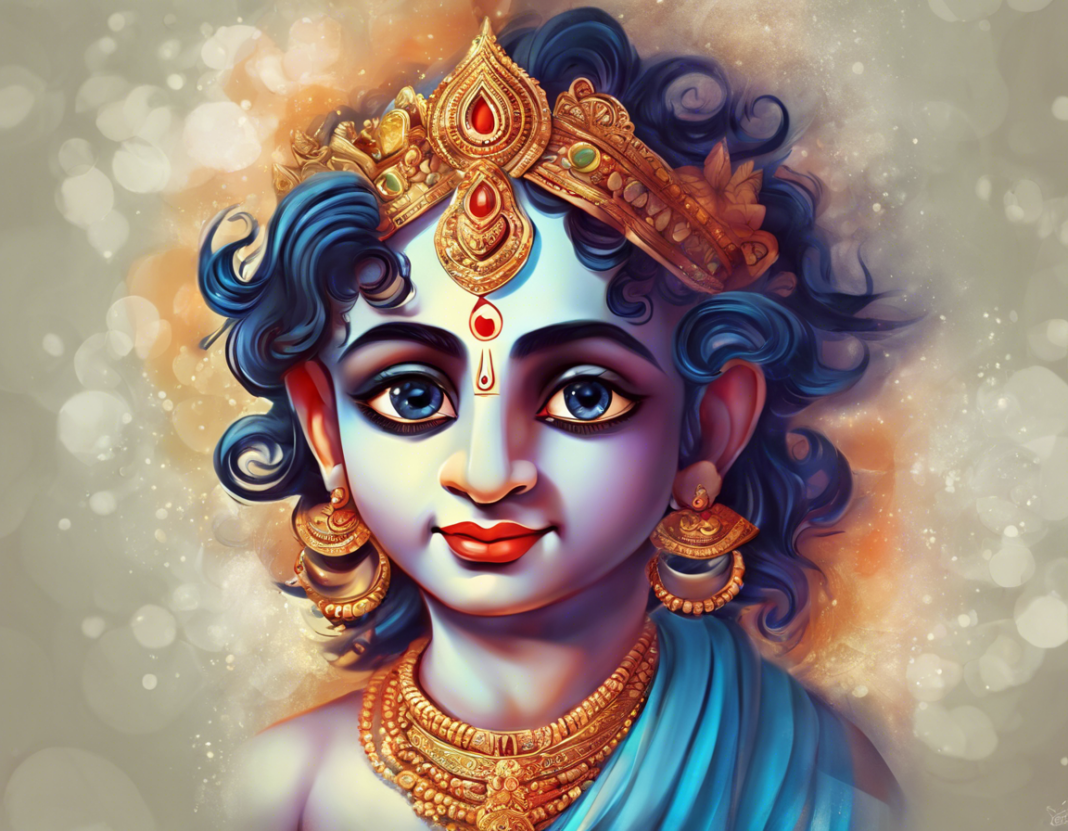In the realm of Hindu spirituality, Shree Krishna holds a special place as an embodiment of divine love, wisdom, and teachings. Known as the eighth avatar of Lord Vishnu, Krishna’s life and lessons as depicted in the ancient texts like the Bhagavad Gita and the Srimad Bhagavatam continue to inspire millions around the world. Let us embark on a spiritual journey to explore the profound significance of Shree Krishna and the timeless wisdom he imparts.
The Birth and Early Life of Shree Krishna
Krishna was born in the prison of Mathura to Devaki and Vasudeva, under circumstances shrouded in divine intervention. His childhood in Vrindavan, filled with enchanting tales of his playful escapades and divine miracles, has captivated the hearts of devotees for centuries. The love story of Radha and Krishna, symbolic of the eternal bond between the individual soul (jivatma) and the Supreme Soul (Paramatma), further embellishes the narrative of his early years.
The Bhagavad Gita: The Essence of Krishna’s Teachings
Among the various texts that extol the wisdom of Lord Krishna, the Bhagavad Gita stands out as a philosophical masterpiece. Presented in the epic Mahabharata, the Gita is a conversation between Krishna and the warrior prince Arjuna on the battlefield of Kurukshetra. Here, Krishna imparts profound teachings on duty, righteousness, and the path to self-realization. The concepts of Karma Yoga, Bhakti Yoga, Jnana Yoga, and Dhyana Yoga elucidated in the Gita serve as a guiding light for spiritual seekers seeking to navigate the complexities of life.
The Leelas of Shree Krishna
The divine play (leela) of Krishna encompasses a myriad of enchanting episodes that convey profound spiritual truths. From lifting the Govardhan hill to vanquishing demons like Kansa and Putana, each leela symbolizes the triumph of good over evil and the ultimate supremacy of divine grace. The Raslila, where Krishna dances with the Gopis under the moonlit sky of Vrindavan, represents the eternal quest of the individual soul to unite with the divine.
Symbols and Iconography of Shree Krishna
Krishna is often depicted with distinct iconographic features that convey deeper symbolic meanings. His peacock feather crown symbolizes grace and beauty, while the flute he plays signifies the harmony of creation. The Kaustubha gem adorning his chest represents the infinite riches of the spiritual realm, encapsulating the idea of divine abundance and magnificence.
Teachings of Love and Devotion
At the core of Krishna’s teachings lies the essence of love and devotion. His relationship with his devotees exemplifies the bond of unconditional love between the individual and the divine. The concept of Bhakti, or devotional surrender, is central to Krishna consciousness, emphasizing the path of heartfelt devotion as a means to attain spiritual liberation and union with the Supreme.
The Cosmic Vision of Shree Krishna
Lord Krishna reveals his cosmic form (Vishvarupa) to Arjuna, showcasing the magnificence and omnipresence of the divine. This awe-inspiring vision underscores the all-encompassing nature of the Supreme Being, transcending all boundaries of form and time. It serves as a potent reminder of the underlying unity of creation and the eternal presence of the divine in every aspect of existence.
Shree Krishna in Contemporary Spirituality
In contemporary times, the teachings of Shree Krishna continue to hold relevance and resonance for seekers on the spiritual path. His message of duty without attachment, selfless service, and unwavering devotion continues to inspire individuals to lead a life of purpose and spiritual fulfillment. The practice of chanting the Hare Krishna Mahamantra and engaging in devotional practices keeps the flame of Krishna consciousness alive in the hearts of devotees worldwide.
FAQs (Frequently Asked Questions)
Q1: What is the significance of the Bhagavad Gita in the teachings of Shree Krishna?
A1: The Bhagavad Gita serves as a pivotal text where Lord Krishna imparts profound spiritual teachings to Arjuna, elucidating concepts of duty, righteousness, and the path to self-realization.
Q2: How can one cultivate devotion to Shree Krishna in daily life?
A2: Devotion to Shree Krishna can be nurtured through regular chanting of his names, reading scriptures like the Bhagavad Gita and Bhagavatam, and engaging in acts of selfless service.
Q3: What is the importance of the Radha-Krishna relationship in Krishna consciousness?
A3: The love story of Radha and Krishna symbolizes the eternal bond between the individual soul and the Supreme Soul, embodying the pinnacle of divine love and devotion.
Q4: How does the concept of Bhakti Yoga align with the teachings of Shree Krishna?
A4: Bhakti Yoga, the path of devotion, is central to Krishna consciousness as it emphasizes the power of love and surrender in attaining union with the divine.
Q5: What are some practical ways to incorporate the teachings of Shree Krishna into one’s daily life?
A5: Practicing selfless service, cultivating a spirit of detachment, and nurturing a loving relationship with the divine are some ways to embody the teachings of Shree Krishna in daily life.
As we delve deeper into the divine aura of Shree Krishna, we come to realize that his teachings transcend time and space, offering timeless wisdom and solace to all who seek spiritual enlightenment. May the enchanting allure of Krishna’s divine play continue to guide us on our journey towards self-discovery and ultimate union with the divine.

